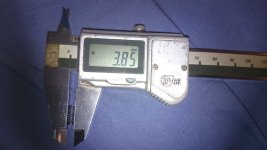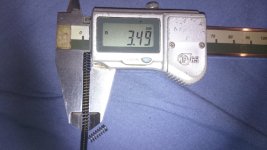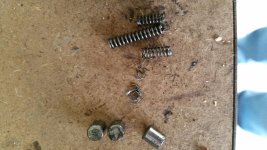I've used the 3.2mm spring that I've found in my garage drawer. It was 200mm long before cutting it to the right length! 3.2mm is the smallest diameter you can use, smaller than that and it becames unstable and wobbles in the spring hole holder.
Q100H 201rpm@36V clutch springs technical data
Spring holder hole diameter: d=4mm.
Outer diameter of the spring: 4mm<D<3.2mm.
Spring wire thickness: As thick as possible.
Spring tension: As strong as possible. Ball pen springs do fit, but you need much stronger ones.
Spring length: Approx 20mm. Cut it as tight (as long) as possible. If you do curse during the install, the length is perfect. If they do not fit, cut them and try again. If it's too easy to install, you need a longer spring.
Total number of springs needed: 3










